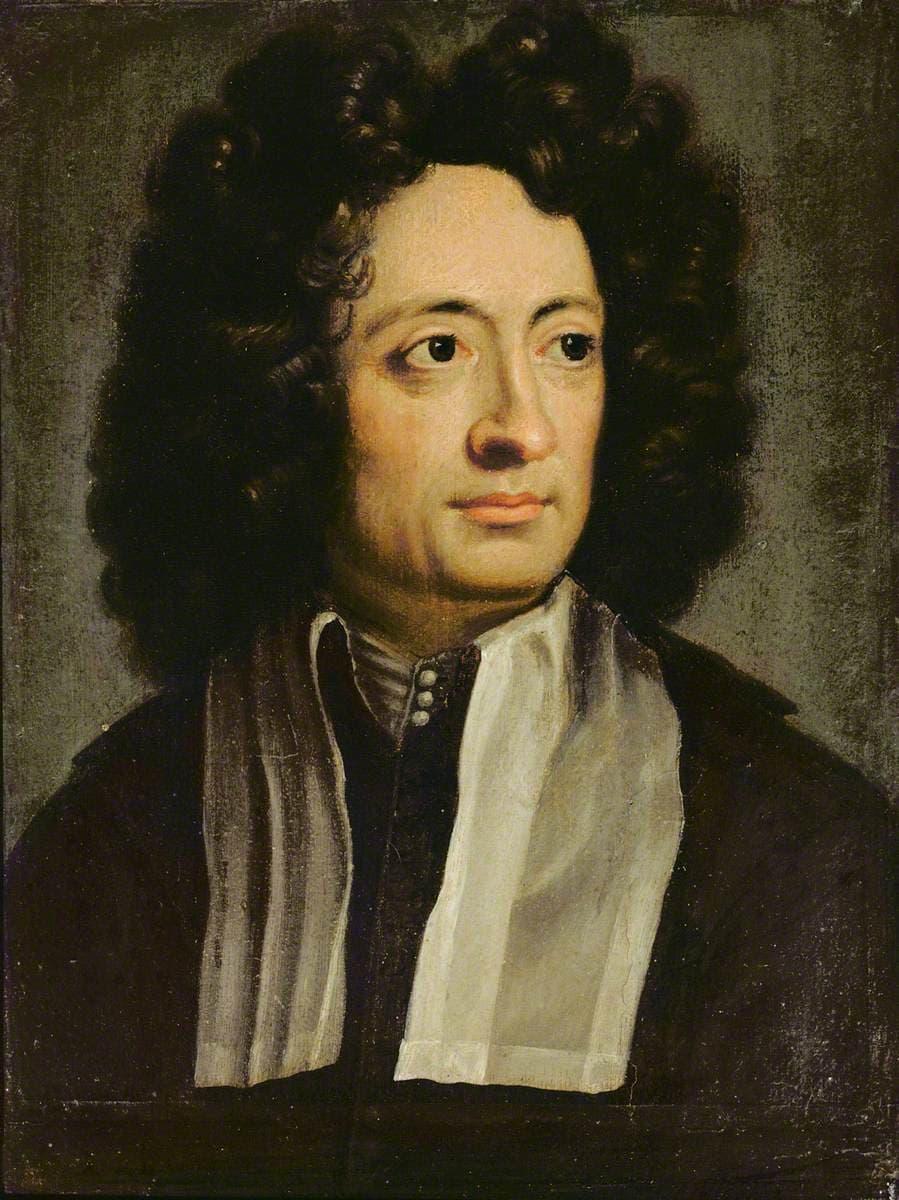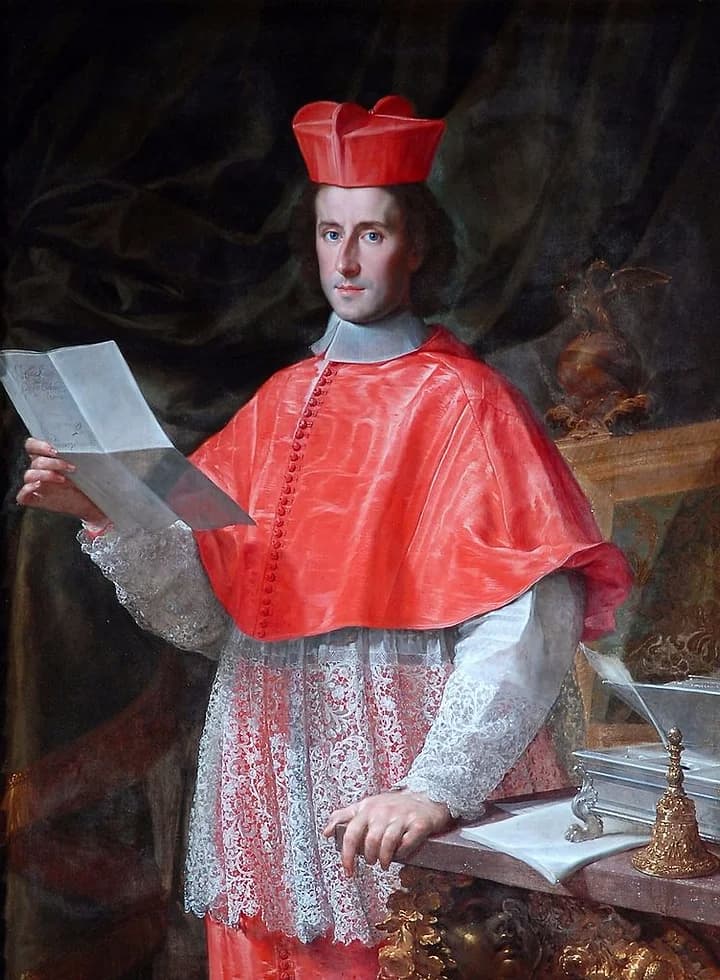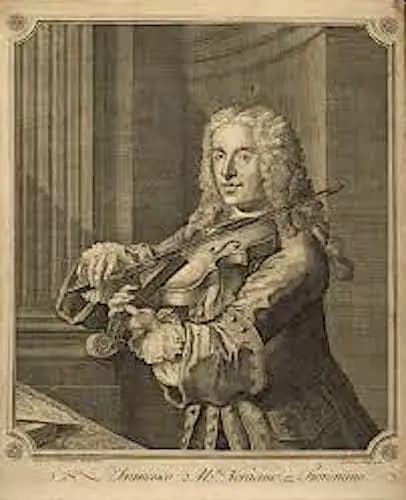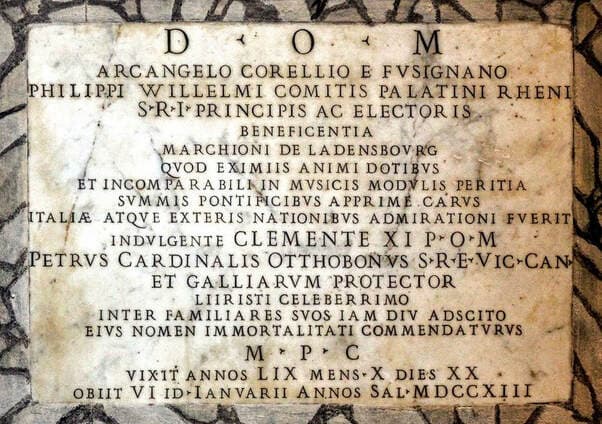The remarkable boom in music publishing around 1700 forever secured and spread the reputation of Arcangelo Corelli. His op. 1 was issued in 39 known editions between 1681 and 1790, and that does not include collective editions of opp. 1-4 and “innumerable arrangements, selections and pastiches for all manner of instruments and even voices.”

Arcangelo Corelli
His 12 Concerti Grossi Op. 6, scored for a small group of soloists and a larger string ensemble, are probably his greatest legacy and influenced and challenged composers for decades if not centuries. But what is more, the number and eminence of his students made Corelli the “most outstanding and influential violin teacher of his time.
Arcangelo Corelli: Concerto in D Major, Op. 6, No. 4
Ottoboni and Fornari
The person at the centre of Corelli’s last decades of his life was Cardinal Pietro Ottoboni, grandnephew of Pope Alexander VIII. The Cardinal had a definite taste for mistresses and making babies, and it is thought that he sired between 60 and 70 children. In addition, he was a great friend of the arts and surrounded himself with an extended circle of gay artists, including Corelli.

Cardinal Pietro Ottoboni
Corelli joined the group in 1690 and was reunited with the violinist Matteo Fornari, whom he had first met in 1682. As Corelli would subsequently write, “I was never far from Matteo’s side for nearly twenty years.” Socially protected and living discreetly amongst a circle of male friends, they devoted their time to the pursuit of music.
Arcangelo Corelli: Sonata in A minor, Op. 1, No. 4
Death
When Corelli withdrew from public view and began to revise his compositions in 1708, a rumour started spreading that he had actually died. Such was his fame at the time that his agent had to issue a public statement. “The report which has spread of the death of the famous virtuoso Arcangelo Corelli is absolutely false, for he is living at the court of Cardinal Ottoboni constantly giving proofs of his talents.

Matteo Fornari
Corelli did become ill at the end of 1712 and he was unable to leave his lodgings. He had rented an apartment of three rooms and a kitchen in order to store his personal belongings, particularly his large collection of paintings. On 5 January 1713 Corelli drew up his last will, and he died during the night of 8 January. He was embalmed and buried in S Maria della Rotonda, the Pantheon in Rome, next to the remains of the painter Raphael.
Arcangelo Corelli: Sonata in D Major, Op. 5, No. 1
The Last Will
Corelli died a wealthy man, and fortunately his last will has survived. As he writes, “To Sr. Cardinal Ottoboni, my patron, I bequeath a picture of his own choosing, and I beg him to have me interred wheresoever seems fitting to him. To Sr. Matteo Fornari I leave all my violins and all my manuscripts, also the plates of my Fourth Works, and in addition the Sixth Work, the profit from which, shall be for him.

Plaque to Arcangelo Corelli, Pantheon
To the Eminence Cardinal Colonna, I leave a picture on canvas by Breughel…I nominate my brothers as residuary legatees. The executors of my will are to be St. D. Giuseppe Mondini and Sr. Girolamo Sorboli, who will arrange my obsequies and have five hundred masses held for me. Given the 5th day of January 1713.”
Arcangelo Corelli: Sonata in C Major, Op. 4, No. 1
Matteo Fornari readied the unpublished Op. 6 Concerti Grossi for publication with Estienne Roger of Amsterdam. To protect his income, Fornari took out a papal privilege that prevented the import or reissue of the Op. 6 on the Roman market. This also prevented rival Bolognese publisher, who had previously issued works by Corelli, from getting their hands on the compositions.
Corelli was described as “remarkable for the mildness of his temper and the modesty of his deportment,” while his playing was praised as being “learned, elegant, and full of pathos.”
Portraits of the composer emphasise his angelic qualities, something reinforced by his first name Arcangelo, meaning archangel. As a scholar wrote, “Corelli is rightly remembered today as the greatest violin virtuoso/composer of the golden age of Italian violin playing in the late 17th century.”
For more of the best in classical music, sign up for our E-Newsletter
